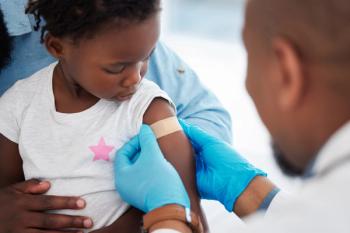
- Vol 35 No 11
- Volume 35
- Issue 11
To test or not to test
Many times, testing seems to be the easiest way to answer a clinical question, but judicious use of tests is the best approach. Here are some guidelines I have followed over the years.
1. If you want to find out if a patient has constipation, and how much, an abdominal film is rarely needed. The 3 P’s are more useful: percussion, palpation, and poking (in the rectum, with an index finger). This last is not as uncomfortable for the patient (or the doctor) as one would think.
2. If parents insist on a test because their child is short, and you do not suspect an endocrine problem, a bone age test is best. It can also help with predicting adult height.
3. Along those lines, normal linear growth usually will rule out an adrenal or thyroid problem.
4. Don’t trust an incidental reading of sinusitis on a computed tomography (CT or CAT) scan. This is almost a universal finding.
5. Finding white cells in an otherwise benign urine on a child who does not have a bladder infection based on history rarely indicates infection. You can culture, but do not start treatment.
6. Amino acid screens seem to almost always have positive findings. They are usually unimportant unless they are orders of magnitude outside the normal range.
7. The antinuclear antibody (ANA) test is not a good screening test.
8. Sometimes you have to get blood work to please parents and reduce their worries. Do the minimum in these cases. For the tired child, this means a hemoglobin rather than a complete blood count (CBC), and a thyroid stimulating hormone (TSH) test rather than a full thyroid panel. For viral sore throats, do a rapid strep test without a culture. If the parents are concerned about diabetes and you are not, a blood glucose (or better yet, urine) test, rather than a comprehensive metabolic panel, should suffice. The less you do, the less likely you are to get false positives.
9. Bayes theorem is the most important mathematical concept you need to know to interpret tests. Basically, it says that if, based on your history and examination prior to getting back results, a diagnosis is very unlikely/likely, then a positive/negative result is probably inaccurate. Unless a test is almost foolproof, do not expect it to be helpful unless you are uncertain as to what may be going on prior to ordering it.
Articles in this issue
about 7 years ago
Riddle me this: Irregular menses in adolescent girlsabout 7 years ago
How to limit your risk of legal liabilityabout 7 years ago
Parent education by text reduces ED visits for nonurgent careabout 7 years ago
Influenza and RSV: How to suspect, diagnose, treatabout 7 years ago
Cannabinoids as future treatment for epilepsyabout 7 years ago
Chronic cough in a 4-year-old boyabout 7 years ago
Menses: A “vital sign” for teenaged girlsabout 7 years ago
Persistent pruritic rash in an 8-year-old boyabout 7 years ago
Kisses for ConorNewsletter
Access practical, evidence-based guidance to support better care for our youngest patients. Join our email list for the latest clinical updates.










